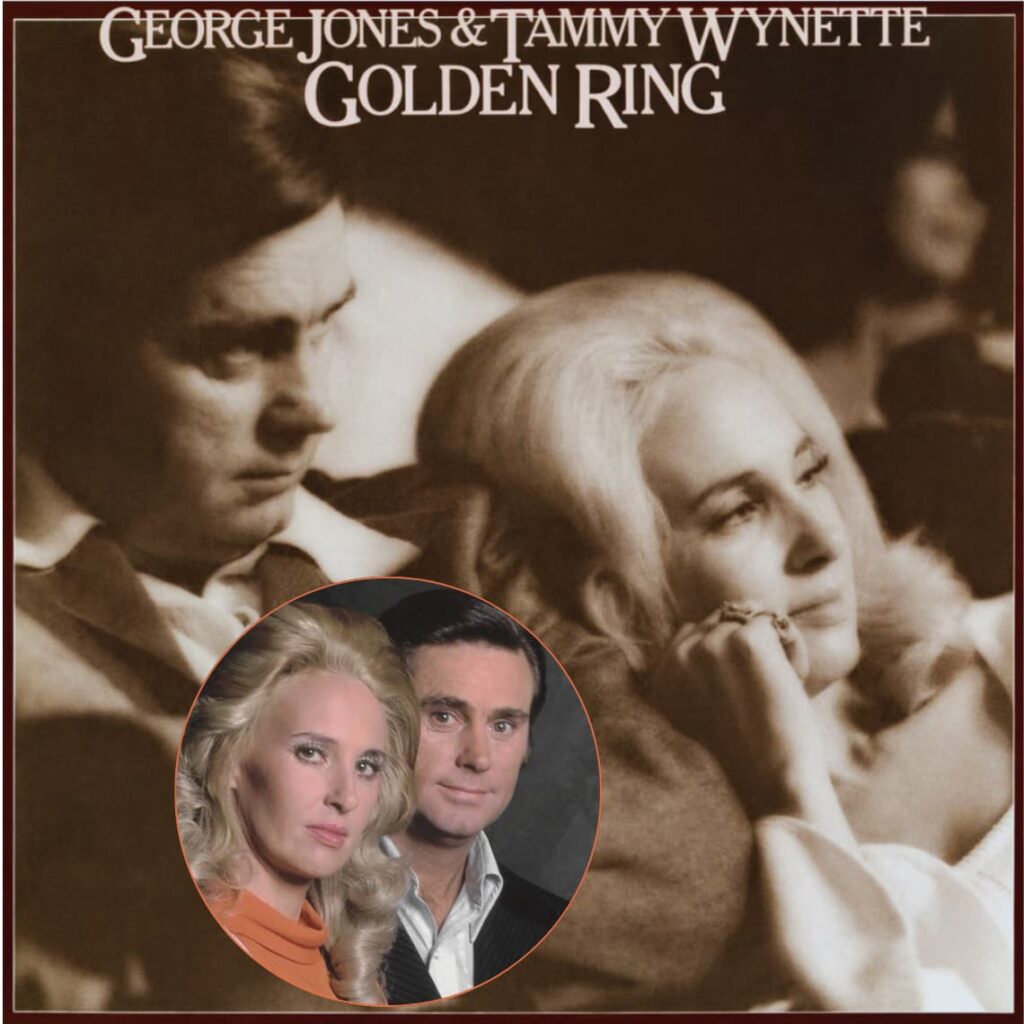
Golden Ring: A Tragic Tale of Love’s Frailty
Tammy Wynette and George Jones. Just hearing those names together evokes a certain kind of ache, a particular brand of country music sorrow that’s steeped in real-life heartbreak. Their musical collaborations were always powerful, but none quite captured the raw, devastating truth of their relationship like “Golden Ring.” Released in 1976 on the album of the same name, this song wasn’t just a hit; it was a deeply personal, almost prophetic, reflection on the fragility of their marriage. At the time of its release, the song climbed to the pinnacle of the country charts, hitting the number one spot on the Billboard Hot Country Singles chart. It wasn’t just a commercial success; it was a cultural touchstone for a generation that was watching the very public disintegration of their favorite country couple.
The story behind “Golden Ring” is as poignant as the song itself. Written by Bobby Braddock and Rafe Van Hoy, the song’s narrative follows a gold wedding band as it journeys through the life of a couple, from their youthful optimism to their eventual, bitter end. It’s a simple, yet profoundly effective, metaphor. The song opens with a young man and woman buying the ring from a pawn shop, full of hope and dreams of a future together. They put the ring on her finger, and it becomes a symbol of their budding love, a tangible representation of their vows. As the song progresses, so does their relationship. We hear about the joys, the struggles, and the eventual decay. The ring, once a symbol of unity, becomes a heavy burden, a constant reminder of promises broken and a love that has soured. The narrative reaches its devastating climax when the woman, now old and heartbroken, takes the ring off her finger and returns it to a pawn shop, where it all began. The cycle is complete, and the once-golden symbol of their love is left to await its next owner, ready to witness another story of hope and eventual despair.
What makes “Golden Ring” so heartbreakingly effective is how it mirrored Tammy and George’s own tumultuous relationship. Their marriage, which lasted from 1969 to 1975, was a whirlwind of passionate love and explosive arguments, punctuated by George’s struggles with alcohol and their shared experiences of immense fame. By the time “Golden Ring” was released in 1976, their divorce was finalized, making the song an almost unbearable listen for those who had followed their story. It felt less like a song and more like a documentary of their own broken vows. When they sang, you could feel the weight of their personal history in every word. Tammy’s pristine, tear-filled vocals, with their perfect control and palpable sorrow, were the ideal counterpoint to George’s powerful, emotionally raw delivery. The combination was electrifying, creating a performance that was less a duet and more a conversation between two people who had once loved each other fiercely and were now left with nothing but regret.
The meaning of “Golden Ring” extends beyond just a simple story of a failed marriage. It speaks to the universal truth that a marriage is more than just a piece of jewelry. The ring is just a vessel, and the true value lies in the love and commitment that it represents. When that love fades, the ring loses its meaning and becomes just another piece of metal, a relic of a time that can never be reclaimed. The song serves as a melancholic reminder that even the most beautiful beginnings can have the most painful endings. For many, especially those who came of age during the era of Tammy and George, “Golden Ring” is more than just a song. It’s a bittersweet memory, a reminder of their own hopes, their own heartbreaks, and the beautiful, tragic truth that sometimes, love just isn’t enough. It’s a timeless classic that continues to resonate because it speaks to the very core of the human experience—the desire to love, the fear of loss, and the quiet resignation that comes when a golden ring, once so full of promise, is finally slipped off for good.